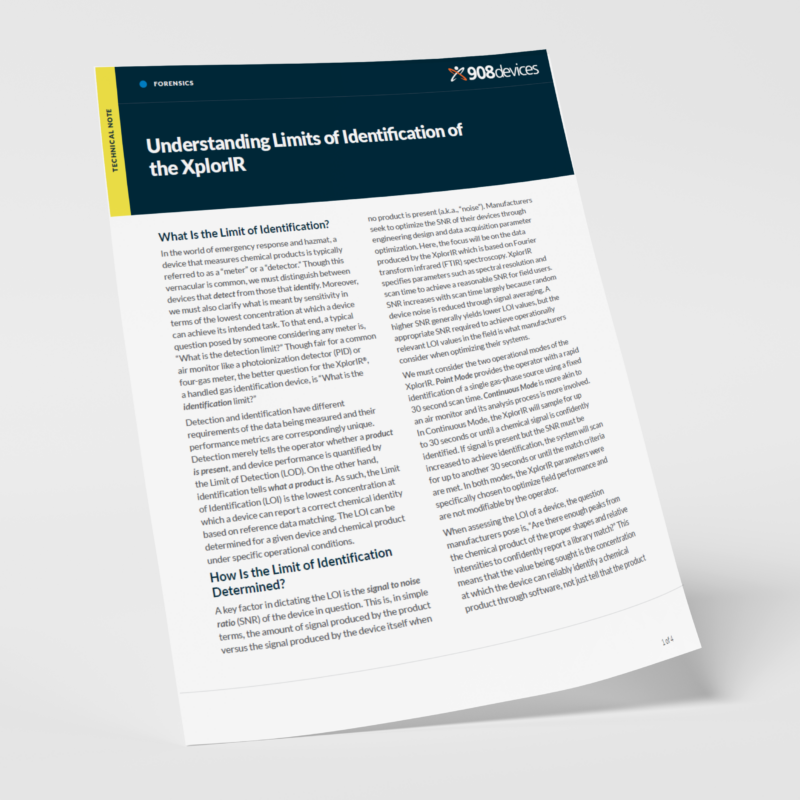Understanding Limits of Identification of the XplorIR
XplorIR’s Limit of Identification can be determined for a given meter and chemical product under specific operational conditions.

In emergency response and hazmat situations, it’s important to distinguish between a device’s “limit of detection” (LOD) and “limit of identification” (LOI), as these terms refer to different performance metrics. While LOD indicates the lowest concentration at which a device can detect the presence of a substance, LOI refers to the lowest concentration at which a device can accurately identify a chemical by matching it to reference data. Factors like the signal-to-noise ratio (SNR), operational conditions, and the chemical properties of the substance affect the LOI. The XplorIR®, for example, uses Fourier transform infrared (FTIR) spectroscopy and has two operational modes—Point Mode and Continuous Mode—both optimized for field conditions. LOI values are typically higher than LOD values and depend on factors such as humidity and the presence of interferents like CO2 or water vapor. Ultimately, understanding these metrics, including how mixed products and field conditions impact identification, is crucial for responders when evaluating device performance.
Subscribe to Our Communications
Signup to receive new product updates, technical tips and more.